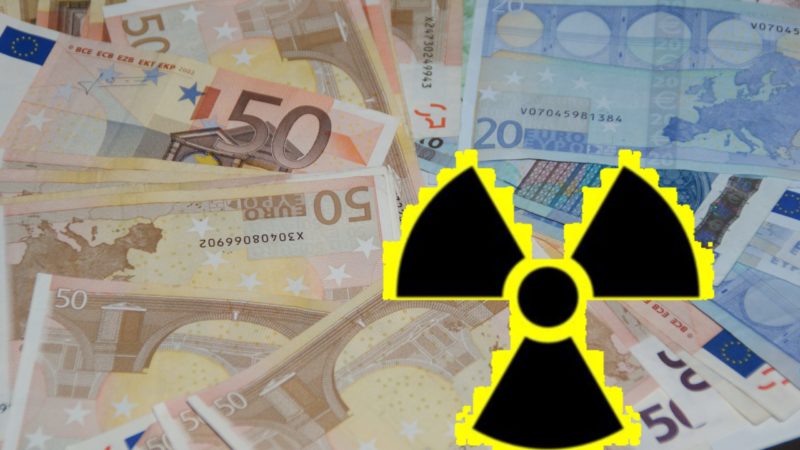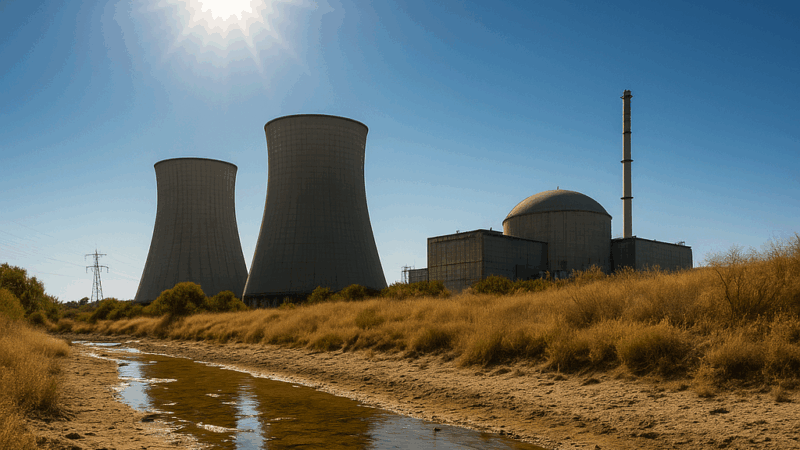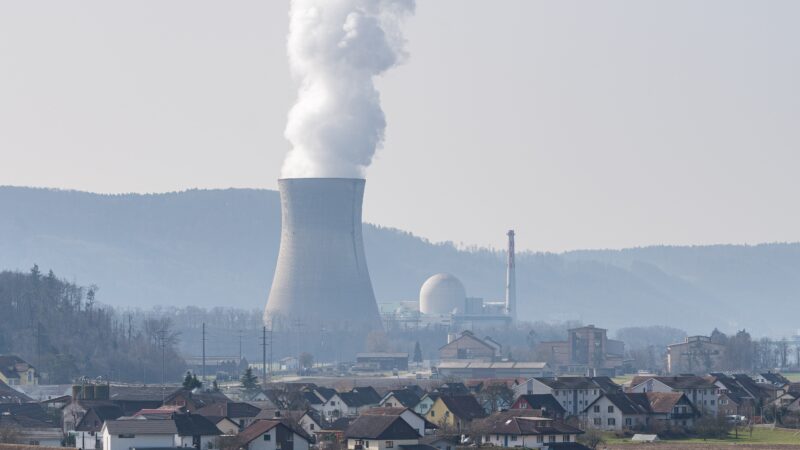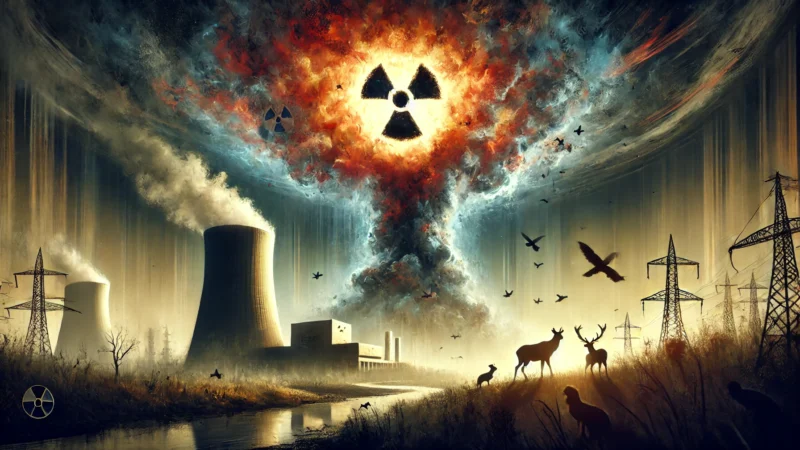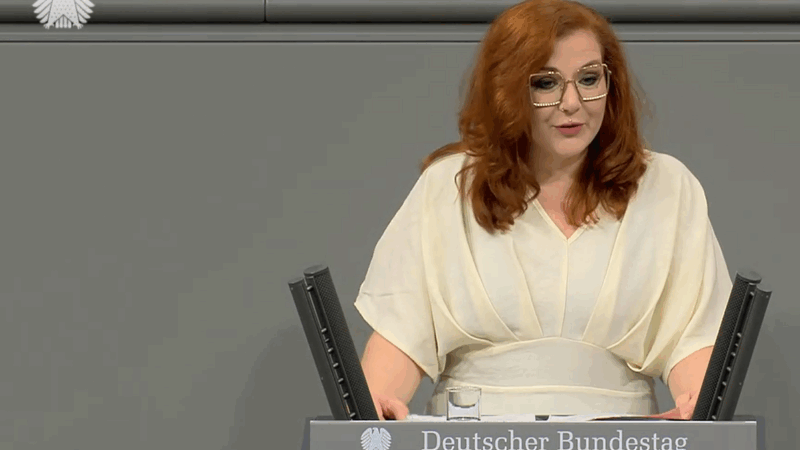US nuclear weapons: Military tritium with support from URENCO?
“It is shocking if true that URENCO and the Federal Government have no problem with supporting the US nuclear weapons programme through enriched uranium from URENCO’s civilian uranium factories for producing tritium. This would clearly cross the already-thin line between military and civilian nuclear use. This must not happen under any circumstances,” states Hubertus Zdebel, spokesman for the phase-out of nuclear power for The Left Party parliamentary group, in response to media reports (Tagesschau, see attachment) about the civilian uranium enricher URENCO. Zdebel has also initiated an oral question to the Federal Government.
- Thist article is first puplished in german on May, 11th, 2017) here: Atomwaffen USA: Militärisches Tritium mit Unterstützung von URENCO?. It is based on a story by the Journalist Jürgen Döschner on German Newsmagazin „Tagesschau„.
- See also the orign-story by Jürgen Döschner on Tagesschau in this translation:Controversial supplies – German uranium for US nuclear weapons?
According to the reports, URENCO would have no legal problems with supplying uranium for the production of tritium for use in American nuclear weapons. According to US government reports, this was the conclusion of a legal memorandum prepared by URENCO. According to the same source, the responsible supervisory body, known as the Joint Committee, which is made up of representatives of the governments of the Netherlands, the UK and Germany and monitors URENCO’s activities and is supposed to prevent improper military use, had no objections to this. Zdebel continues:
“We should be happy if the US government has not yet made use of URENCO’s offer. So that this does not change in light of the ‘looming crisis’ in US tritium production that has been mentioned in the US media or under the new President Trump, a clear message from the Federal Government is needed now: that it will not supply such materials under any circumstances. It must make this clear via the URENCO supervisory body, the Joint Committee, on which Germany is represented and has veto power.
A few days ago, I also submitted an interpellation on this topic to the Federal Government. The Federal Government must not play a game of hide and seek about this now. URENCO is playing with nuclear fire. We must not forget that the company itself is highly militarily charged because the centrifuges used to enrich uranium are inherently capable of producing weapons-grade uranium. That is why URENCO is strictly monitored by the countries of Germany, the UK, and the Netherlands. Against this backdrop, URENCO must not be permitted to support the US nuclear weapons programme, not even indirectly.
One must criticize the US as well, however: through the use of a commercial nuclear reactor – Watts Bar 1 in Spring City – for military purposes for tritium production, the US makes itself vulnerable in terms of international efforts to maintain the separation between civilian and military uses of nuclear energy. Germany must not additionally condone or tolerate this by supplying uranium via URENCO. Other countries could likewise get the idea of including their civilian nuclear reactors directly in their nuclear weapons plans.“
About the background and the US documents:
The United States’ nuclear weapons programme is facing a problem. Because the last of the US’s own uranium enrichment facilities was closed down a few years ago, it could suffer a future shortage of the tritium that is needed for warheads. At the beginning of March 2017, two US nuclear experts spoke of a “looming crisis” in tritium production in an article on the website defensenews. The article also mentions URENCO:
http://www.defensenews.com/articles/commentary-the-looming-crisis-for-us-tritium-production
- The tritium in nuclear warheads must be replaced regularly, as it has a half-life of just over 12 years. (Wikipedia)
The problem that tritium poses for the nuclear weapons programme has been under discussion in the US for some time. This is also related to the closure of the United States’ only uranium enrichment facility in 2013.
Tritium production with enriched uranium takes place in a normal nuclear reactor belonging to the Tennessee Valley Authority (TVA). Currently, this is done at the Watts Bar 1 reactor. In the future, however, according to TVA, an additional block of the Sequoyah Nuclear Plant is to be used to produce tritium.
To this end, special fuel elements are to be irradiated in a reactor for a period of 18 months, then transported for tritium extraction to the Savannah River Site, where the extraction takes place.
For now, the United States is still able to make do by processing remainders and blending surplus highly enriched uranium to generate fuel for use in the TVA reactor. But without its own enrichment facility, the United States can only keep producing tritium in the medium term if it makes use of uranium from “foreign” facilities.
URENCO, in which the two German nuclear energy companies E.on and RWE have a one-third share, alongside the United Kingdom and the Netherlands, is one such foreign supplier. Along with its uranium enrichment facilities in Almelo (Netherlands), Capenhurst (UK) and Gronau (Germany), URENCO operates an additional factory in Eunice, New Mexico.
Because URENCO’s enrichment technology is also inherently capable of producing weapons-grade uranium, URENCO is subject to strict security controls so that this does not happen. In the Treaty of Almelo, the three countries of Germany, the Netherlands and the United Kingdom stipulated that URENCO was permitted only to work for “peaceful” nuclear energy. Regarding the construction of a facility in the United States, this is also established in the Treaty of Washington between the three URENCO countries and the United States.
In an opinion article published on the website defensenews on 6 March, the American experts John R. Harvey and Franklin C. Miller (Harvey: Departments of Energy and Defence, Miller: Department of Defence and National Security Council (NSC)) report on the growing problem of supplying tritium to the US nuclear weapons programme. They write that URENCO was evidently prepared to provide enriched uranium for tritium production for the US nuclear weapons programme:
- “Failure to restore domestic enrichment by the early 2030s leaves only one alternative: use of foreign-origin LEU. But there are many drawbacks. Some exporting countries will not sell LEU for tritium production because agreements in place limit use solely for peaceful purposes. Earlier, an international consortium (URENCO) agreed to provide LEU for TVA reactors, whether tritium producing or not, but previous administrations rejected this on the grounds that it further weakened separation of national defence-related and commercial nuclear activities. And, to be clear, because nuclear weapons play such a critical role in US security, and the security extended to allies, our nation cannot rely on global markets, or other countries’ decisions, to provide means to ensure that security.“ Source: Commentary: The looming crisis for US tritium production, by: John R. Harvey and Franklin C. Miller, 6 March 2017, About the authors: http://www.defensenews.com/author/john-r-harvey-and-franklin-c-miller.
A 2014 report by the Department of Energy (https://www.gao.gov/assets/670/666505.pdf or https://www.gao.gov/products/GAO-15-123) states that URENCO apparently supplied TVA with enriched uranium for use in its nuclear reactors under contracts from the years 2006 and 2010. The documents do not state whether it was also used at Watts Bar 1.
According to the report, URENCO wrote a legal memorandum stating that it had concluded that supplying uranium in this manner was permissible for URENCO despite the existing control treaties. The Joint Committee, the URENCO supervisory body established through the Treaty of Almelo, was also reported to have agreed with this view in 2005. In this Joint Committee, the governments of the three countries of Germany, the Netherlands and the United Kingdom monitor adherence to the control agreements according to which URENCO is bound to exclusively civilian purposes.
Neither URENCO nor its three-country supervisory body had any objections to supplying uranium to TVA, given that – according to the DOE report – it was used in the TVA reactors first and foremost to generate electricity, and only incidentally to produce tritium.
- “DOE and Department of State officials have cited these US non-proliferation goals in response to questions about whether TVA could use LEU produced by URENCO LES for tritium production. Specifically, URENCO’s corporate position has been that the Washington Agreement, under which its uranium enrichment facility in the United States operates, does not restrict the use of its LEU for the production of tritium. In 2006 and 2010, URENCO LES entered into a contract with TVA to provide LEU for use in TVA’s commercial nuclear reactors. Because TVA produces tritium for NNSA in one of its nuclear reactors, URENCO LES evaluated the extent to which the Washington Agreement precludes the use of LEU produced with URENCO technology in TVA’s tritium-producing reactor. According to a URENCO legal memorandum, in a July 2005 meeting of the Joint Committee—the British-Dutch-German government body supervising company activities under the Treaty of Almelo—URENCO corporate management posited that providing LEU enriched by URENCO LES to TVA for use in any of its reactors was not in conflict with the Washington Agreement’s peaceful use provisions. As reported to company officials in the United States, the Joint Committee confirmed that the Washington Agreement’s provisions restrict special nuclear material produced by URENCO LES to peaceful purposes. According to URENCO’s legal memorandum, it was further discussed that URENCO LES’s LEU will be used by TVA principally to produce electricity and that, if used in TVA’s tritium producing reactor, the resulting tritium produced in that reactor is a by-product material and not a special nuclear material. According to senior URENCO officials, the Joint Committee further discussed the fact that TVA would primarily use URENCO LES’s LEU for the purpose of producing commercial power. According to company officials, the Joint Committee did not place restrictions on the URENCO LES’s contract with TVA and did not distinguish between TVA’s reactors that produce tritium and those that do not. Furthermore, according to TVA officials, URENCO has consistently informed TVA that it places no restrictions on TVA using URENCO LES’s LEU in its tritium-producing reactors.” (in: “DEPARTMENT OF ENERGY Interagency Review Needed to Update US Position on Enriched Uranium That Can Be Used for Tritium Production”, October 2014, p. 30, https://www.gao.gov/assets/670/666505.pdf or https://www.gao.gov/products/GAO-15-123).
The Department of Energy did, however, state some reservations about the use of URENCO uranium in tritium production in reference to the blurring of civilian and military boundaries in nuclear energy use. In view of the available information, it is not clear at this point in time whether or not, under the aforementioned contracts, URENCO uranium was also used in TVA’s Watts Bar 1 reactor.
- Other sources also refer to the URENCO assessment, see here AtomInfo.RU from December 2014 (http://www.atominfo.ru/en/news4/d0302.htm): “The company made a corresponding analysis before the conclusion of contracts for the supply of the enriched uranium to the TVA plants. The documents available for auditors contain a clear conclusion – the LEU from URENCO USA can be used on any unit, operated by TVA, including the unit(s) where the tritium is produced.” In a report from November 2014, AtomInfo.RU also writes about the problems for the US that arise from the foreign facilities with AREVA, France and Australia, further aggravating the US’s tritium problems (http://www.atominfo.ru/en/news4/d0269.htm).
- In 2012, when the closure of the last US enrichment facility in Paducah had already been planned, experts explained the problems for the US nuclear weapons programme that would result from this closure in a paper to Massachusetts Senator Ed Markey (https://www.markey.senate.gov/): The Department of Energy “currently produces tritium by irradiating lithium-6 in the Watts Bar 1 commercial reactor (in Tennessee) and may expand the programme to the two-reactor Sequoyah nuclear plant (also in Tennessee) as well, both of which are owned and operated by the Tennessee Valley Authority (TVA). Because the tritium is to be used in nuclear weapons, the Watts Bar 1 and Sequoyah reactors may not be allowed to use fuel from foreign sources or even some domestic uranium.“ (https://www.markey.senate.gov/imo/media/doc/CRSMarkeyMemo_TritiumFuelOptions_051512.pdf)
- Markey’s statement also refers to a URENCO contract with TVA: “Urenco has signed a contract with TVA to supply enrichment services from its New Mexico plant to the Watts Bar and Sequoyah reactors. This arrangement raised questions about whether the TVA plants could be used to make tritium for nuclear warheads while being fuelled by enriched uranium from Urenco. A 2008 legal memorandum to NNSA concluded that the Washington Agreement did not preclude such use of the Urenco-produced nuclear fuel, because tritium is not defined as special nuclear material, but rather as by-product material. A Joint Committee of the Urenco consortium, after being briefed on the issue at a 2005 meeting, did not object to the TVA contract.”
Harvey und Miller presented a task for the new Trump administration: “By the early 2030s, the viability of the entire US nuclear deterrent is at risk from an inability to produce tritium for nuclear warheads. The Trump administration will need to take action soon to manage this long-term problem.”

